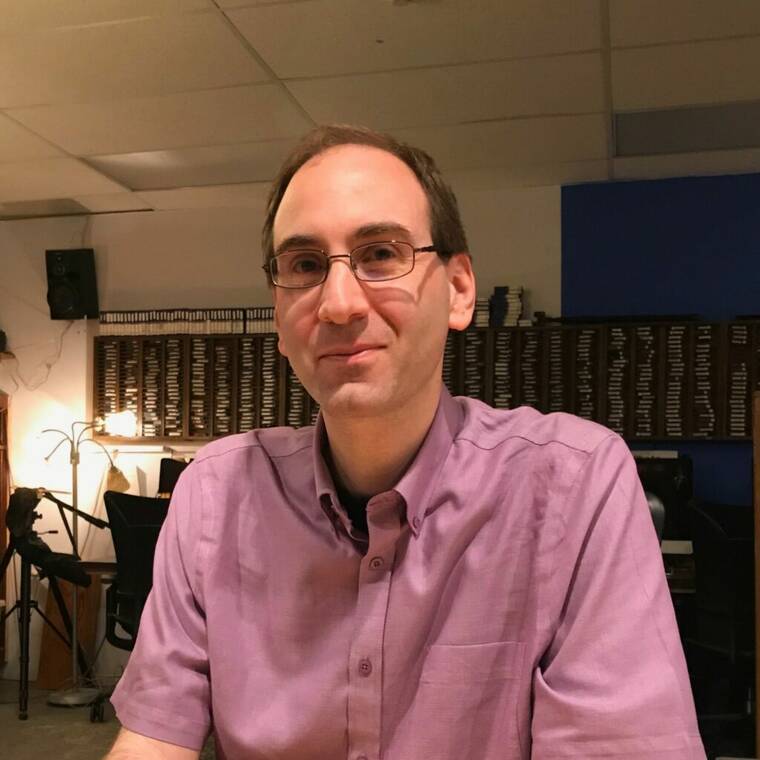A national energy and waste expert poked holes Tuesday in several planned Hawaii County environmental projects.
Mike Ewall, an environmental activist and founder of the Energy Justice Network, a national support organization for grassroots clean energy community groups, spoke Tuesday at a meeting of the County Council’s Communications, Reports, and Council Oversight Committee to discuss the county’s various plans to reduce waste and transition to clean energy.
Ewall’s presentation specifically called out several projects that the council has endorsed this year, describing them as either unrealistic, inefficient or potentially dangerous.
According to Ewall’s presentation, transitioning the county to 100% clean energy should be feasible through investment in wind, water and solar energy, citing a 2021 study by Stanford University. What will not help the county’s environmental goals, he said, is pursuing technologically driven ventures that promise to “take all the things we don’t want, put it in a black box, and only good things are going to come out.”
In particular, Ewall questioned the council’s support of a company called Yummet, which has announced plans to build a facility on the Big Island that can use proprietary technology to convert various waste items — ranging from plastic, green waste, glass and even greenhouse gases — into clean air, water, hydrogen, carbon-negative concrete and biochar, which can be used to trap carbon and prevent it from entering the atmosphere.
The council passed a nonbinding resolution in March urging the county to develop a facility on the island that can convert “all municipal solid waste” into such clean items by 2026. Although the resolution did not mention Yummet by name, several council members said at the time that they had heard presentations by Yummet’s CEO Brittany Zimmerman touting Yummet’s process, and county Research and Development Director Doug Adams was touring a Yummet pilot site in Minnesota at the time of the resolution’s introduction.
Ewall called the Yummet proposal “a Disneyland of experimental types of technologies,” but added that he has seen plenty of other clean energy businesses promise the moon and fail to deliver.
“I’ve seen numerous companies that fit this description, just with different twists … for 20 years now, across the country,” Ewall said. “We see so many cases where they’re not being honest with communities. … There are just a lot of myths about what you can do with this.”
Even assuming Yummet’s technology works as advertised and can operate at an industrial scale — a big assumption, Ewall emphasized — he said studies indicate biochar exceeds European standards for lead and zinc and could introduce toxins into the soil if used long-term.
“There have been so many communities that pursue this, you end up with companies that get showered with grants, with consulting contracts, with different deals,” Ewall said. “And then they end up not building anything. They either disappear or they fall apart technically or financially or both. And I’d hate for you to be wasting your time and money on something that so many other communities have had to learn the hard way just doesn’t work.”
In a similar vein, Ewall addressed the county’s commitment to hydrogen infrastructure. In May, the council signed onto a pledge by Mayor Mitch Roth to work with Lancaster, Calif., and Hilo’s sister city Namie, Japan, to form a “Pacific Hydrogen Alliance,” which would promote the development of hydrogen technology and share practices between the three cities.
While the state’s bid to become a clean-hydrogen production and distribution hub failed to be awarded U.S. Department of Energyfunding earlier this month, Ewall said hydrogen production presents other technical problems beyond an absence of funding or infrastructure. In particular, he said, there currently is no “clean” way to produce hydrogen.
Hydrogen is generally produced by stripping it from hydrocarbons or water, Ewall said. The former process naturally involves fossil fuels, emissions and other factors that would not be considered “clean,” while the latter is unfeasible given current technology.
“Green hydrogen is when you use wind and solar energy … to split water, you have H2O, you take the Hs and Os, you separate them and you have hydrogen,” Ewall said. But, he went on, such a process is so energy intensive as to be unreasonable: Why use so much wind and solar energy to produce hydrogen to burn for electricity instead of simply using that wind and solar energy to generate power?
Ultimately, Ewall said, the county’s path to clean energy and zero waste lies in specific policies, not in ambitious technological schemes. He laid out seven solutions to improve the county’s waste and energy systems, including a ban on single-use plastics and requiring the use of recovered building materials in new construction, which he said would ultimately be more achievable.
One of those solutions was a “pay as you throw” policy at county transfer stations, which would charge transfer station users proportionally to the amount of waste discarded.
“With trash, your neighbor could put out 10 bags a week, you could put out one bag, and you pay the same,” Ewall said. “So, there’s no incentive to reduce waste.”
Ewall said places that have implemented pay as you throw schemes have seen waste reductions of about 44%.
While Ka‘u Councilwoman Michelle Galimba wryly noted that Ewall had “skewered the favorite solutions” of the council, members were appreciative of Ewall’s presentation.
However, none indicated they were immediately considering a walk-back from previous resolutions or taking up Ewall’s suggested policies.
Email Michael Brestovansky at mbrestovansky@hawaiitribune-herald.com.






